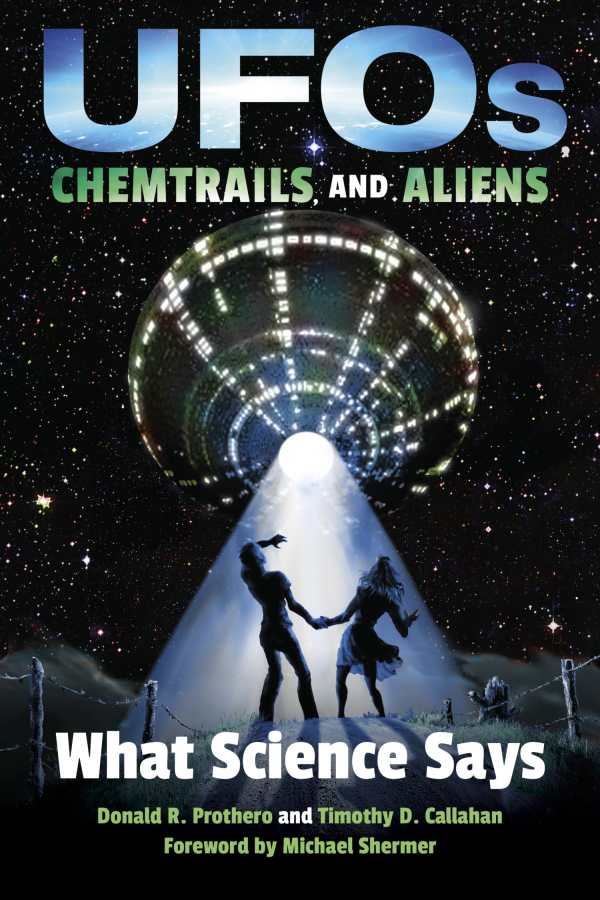UFOs, Chemtrails, and Aliens
What Science Says
- 2017 INDIES Winner
- Honorable Mention, Popular Culture (Adult Nonfiction)
This entertaining study reveals a public fascinated with the unverifiable.
Even for those who don’t believe the hokum, aliens and UFOs are a source of fascination—explored through speculative fiction, sci-fi flicks, and television “documentaries” about alien autopsies and ancient astronauts. Science professor Donald R. Prothero and illustrator/editor Timothy D. Callahan analyze why we are so alien-obsessed, in UFOs, Chemtrails, and Aliens: What Science Says.
The authors analyze flying-saucer sightings, alien abductions, UFO-based cults, and a passel of other conspiracy and scientifically unfounded theories. They first tackle the psychological underpinnings of human preoccupation with alien life, in an insightful chapter that describes how human brains are hardwired to find patterns in random, meaningless events in order to quell anxiety about things that are beyond our control.
They cogently and patiently explain impulses to seek complicated answers for life’s unknowns, even when simpler, more mundane explanations exist. It is eye-opening to learn the methods used by media hucksters and con artists, from L. Ron Hubbard to Erich von Daniken, that capitalize on these fears and insecurities, reinforcing the public’s shared mind-set of reptilian, bug-eyed little gray men, or omniscient “Nordic” type aliens.
The book covers a lot of ground: there are narratives of alien probings, Roswell, New Mexico’s flying-saucer “cover-up,” alien and crystal skulls, crop circles, and discussions of the chemtrails that are imagined to poison us or control our minds.
Each chapter starts with detailed accounts of the prevailing standard theories, which often seem quite convincing; then comes the patient, scientific analysis of the “facts,” which evanesce under rational scrutiny, based as they inevitably are on a pyramid of hearsay, inconsistencies, anonymous witnesses, flawed memories, and conveniently mislaid or lost hard evidence. The authors end each chapter with an elegant recap of how each bizarre theory crumbles upon application of the scientific method.
While this book is entertaining, it may also result in frustration and melancholy on the part of science lovers when they note just how many people ardently believe in wildly unfounded theories, even after confronting piles of evidence that refutes their notions. That is a trend that seems destined to mushroom in the Internet’s “giant echo chamber for weird ideas, with no peer review, fact-checking, or quality control.”
Reviewed by
Rachel Jagareski
Disclosure: This article is not an endorsement, but a review. The publisher of this book provided free copies of the book to have their book reviewed by a professional reviewer. No fee was paid by the publisher for this review. Foreword Reviews only recommends books that we love. Foreword Magazine, Inc. is disclosing this in accordance with the Federal Trade Commission’s 16 CFR, Part 255.

